How to get rid of interfaces
Hello, Habr!
We did not have time to put in the layout an excellent book with the intriguing title " Design. A book for non-designers " (wait in October), as we were fascinated by an even more original design work, the author of which allowed himself to doubt the expediency of further multiplying graphic interfacesand suggests eliminating them as a class . We decided to translate an article with an excerpt from this book, which will at least amuse you before the weekend. If you are a person with an artistic and creative spirit who has ever slammed the keys in a car, then we ask you not only to familiarize yourself with the article, but also to help us decide on the relevance of the book.
The author and designer, Golden Krishna, believes that our contemporaries are literally riveted to the displays of gadgets, and that companies developing and promoting applications do us a disservice. " Our passion for digital interfaces went out of control, " he said at the SXSW conference two years ago; since then he has been working on and developing this idea. “Many people would like to spend much less time staring at the screen,” says Krishna, “so why are display solutions so welcome in the technology world?”
')
The new book of Krishna, The Best Interface is No Interface , describes how we have come to such dependence, how to get rid of it and ensure that we are really solving the problem in the best possible way. The decision may well boil down to creating another mobile application - Krishna does not deny this and does not call for a return to the era of clamshell phones - but it may be different. The author only believes that the mass of designers and companies by default, to the use of displays and mobile applications, sometimes only complicating the way to the intended goal.
This publication contains the contents of one of the chapters of the book of Krishna. The material in this chapter is particularly relevant, considering how much attention is now focused on Apple and its new high-tech smart watch. “In many articles on the use of Apple Watch, the authors praise the standard on-screen interactions,” says Krishna. - “Here are all the screens that will have to open to call a taxi. Here's what Facebook notifications look like. Here is your Instagram feed. It's all boring, not to mention the fact that the watch functionally duplicate the smartphone. ”
Despite the feeling that we, as it were, “overshifted”, Krishna hopes that the situation will begin to improve, and believes that young designers can contribute to this. “Young people are not cool to put fingers on the screen, as their ancestors did,” he believes. - “All these screens are too similar to one another.” By the way, teenagers gradually begin to refuse Facebook . There, the presence of parents is increasingly felt, while other services and applications are not just more flexible, but also cope better with their immediate task: the exchange of messages and pictures.
The following chapter from the book The Best Interface is No Interface is called “Screen Thinking: Let's Write the Application!” In it, Krishna presents, perhaps, the most vicious scenario of “screen thinking” that has taken root in many companies.
On-screen thinking: Let's write the app!
Somewhere and sometime we fell in love with each other.
True, I do not remember when. Like all relationships, this affection arose as if in a single moment - to replace our inexpressive affairs that we had to deal with earlier, there was a passionate and unconditional love for modern, charming, wonderful new day interfaces: mobile applications.
Maybe it all started with a sweet, insinuating whispering, which we regaled in 2009:
“This is what the iPhone conquers: if you want to find out if there will be snowfall in the mountains today - and for this there is an application.”
Who cares about the statistics of the "National Association of Retail Sports in the Field of Winter Sports Equipment", according to which only 2.6 percent of Americans go skiing, and they do it no more than eight days a year. The main thing - there is an application. Having given in to this singing of sirens, we already understand nothing. Love and reason? They do not mix like oil with vinegar.
The sales agent kept saying everything. Heart beat faster. “And if you want to clarify where exactly you parked yesterday ...”
Do not tease me. We all know what will happen after this phrase. Three beautiful patented words that seemed not to have deliberately sharpened our generation into a real cell, limiting any technological creativity.
There is a suitable application TM
ABSENT-FREE, SURFACE APPS
What is the difference that about 780 million people in the world suffer from a shortage of clean drinking water, which in the rich USA has more than half a million homeless people. We went out of the plane of these “prosaic” social problems and all together moved into the sphere of technology - which in the usual manner breaks the old, inculcates the new, continuing the chronicle of progress - to provide the world with the most necessary: new mobile applications.
But this is not about ideal, meaningful, inconspicuous applications that silently and effectively work on your smartphone, watch or tablet. We offer to your attention vacuous and superficial applications that tempt you with life-affirming, to the heart attractive interactive interfaces that react to brushing and pinching with two fingers. This is what people really want, what they desire and desire.
Love is patient. Love is sweet. Love is downloaded for only 99 cents.
Take any news resource. It is likely that there will be a fresh article, a column, and perhaps a whole rubric, the authors of which saliva emanate from new applications. Maybe the journalists just want to brag about what they are about - yes, we understand the applications - but maybe they just like to refuel with oxytocin, which stands out from the fun of the touch screen.
The application as such does not necessarily prove useful and necessary to anyone, but - tsss! - we must stand up for the honor of our favorite program. Application development is presented as a fascinating fairy tale: we just have to pray for the person who wrote the workable code, which somehow gave us a dark and mysterious path to the catalog of Apple or Google applications.
A pair of words about oxytocin
The New York Times has a column called “App of the Week,” as well as a standing column, “App Smart Extra,” with inspiring headlines like “A weather app that works.” Does it really work ?! Well, just a balm for the soul.
And when there was a financial crisis, the New York Times presented a program from Bloomberg in the “App of the Week” section, which reports “basic data from stock markets”. What? Masterpiece!
So imagine how you pour yourself a glass of Chablis, put the album of Norah Jones for the mood and re-read the insightful opus of “USA Today” entitled “5 new applications that will change your life.” I am already on the first line: “Applications, again apps ... truly changed our lives. "
You might be thinking, “Oh, just turn on some talking head on TV and forget about my smartphone museum.” Think about it, my friend. Below are the non-fiction headlines from CNN.
According to Google Trends, the most popular search query is the word “app.”
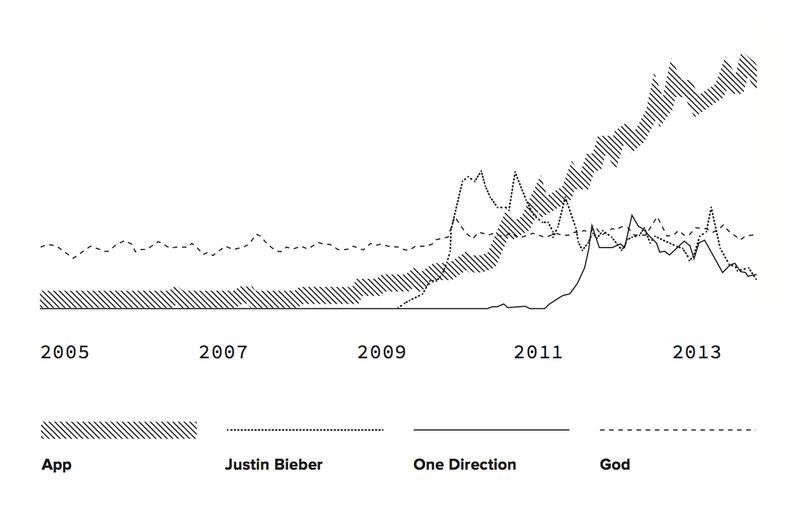
Not surprisingly, almost any large automotive company develops applications for smartphones. Who can resist this passion? If the engineering industry for 120 years engaged in the creation of all-new four-wheel models, then it would not hurt to update a little. Some applications, praised in press releases and blogs, allow you to open the doors in the car.
“My BMW app opens doors, launches power, and more ...”
The question arises: how to make a better car key? Most of these applications for automatic door opening are functionally similar, so for the sake of demonstration, let’s look at how exciting it would be to use the BMW application for iPhone when the latest version of the Apple operating system is installed on the smartphone. In Apple language, this means “the most advanced OS in the world. Her highest incarnation. "
1. Go to the car.
I go to the car, I want to open the door.
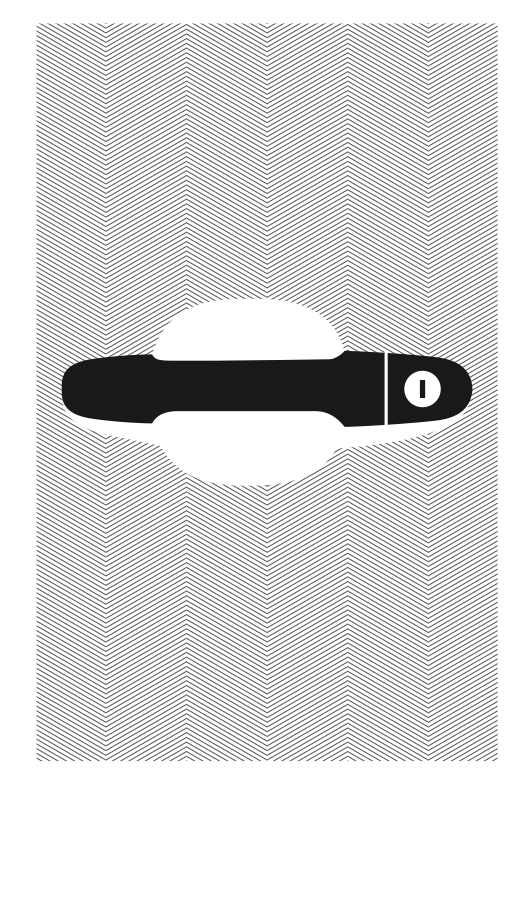
2. Take out the phone.
Going to open the door. Therefore, I put my hand in my pocket and carefully remove the smartphone from there, because, of course, I don’t want to drop the valuable thing made of glass and thin metal onto the concrete floor of the parking lot.
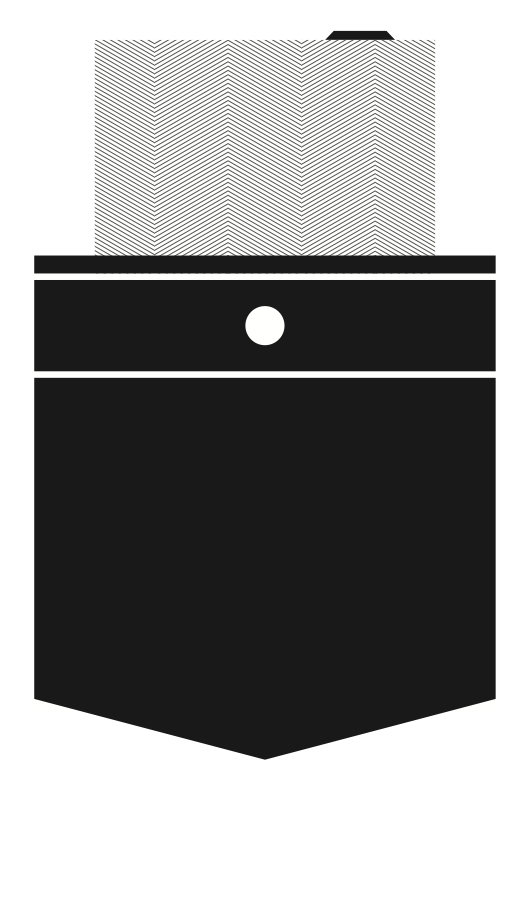
3. I activate the phone.
I want to open the door. Therefore, I look at the phone and almost automatically remove the gadget from sleep mode by pressing the main button.
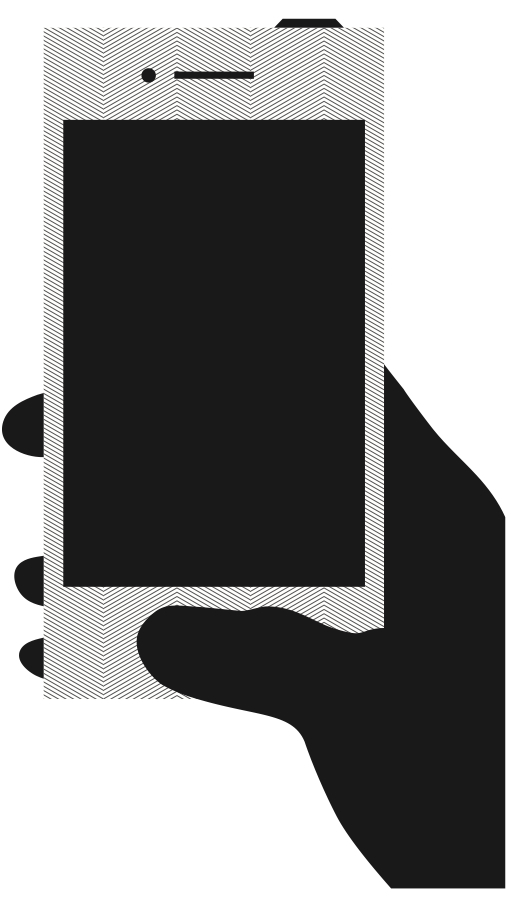
4. Unlock the smartphone.
I want to open the door. I look at the phone, press the round Home button under the screen so that the fingerprint scanner unlocks my device.
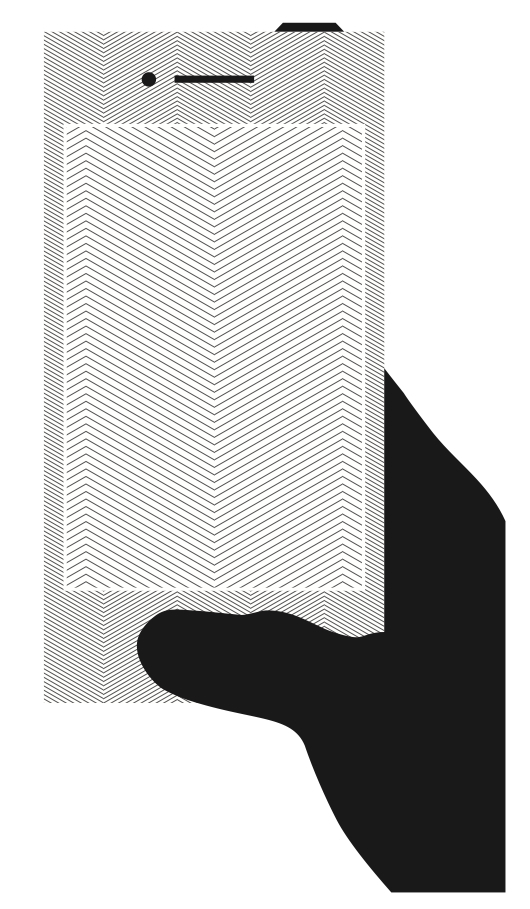
5. Exit the last open application.
I want to open the door. I look at the phone, I see the last open application and press the Home button to exit the application (I hope the Twitter feed will not distract me. By the way, have you already seen the photos of the august baby? It is growing so fast! So, what did I want there ...)
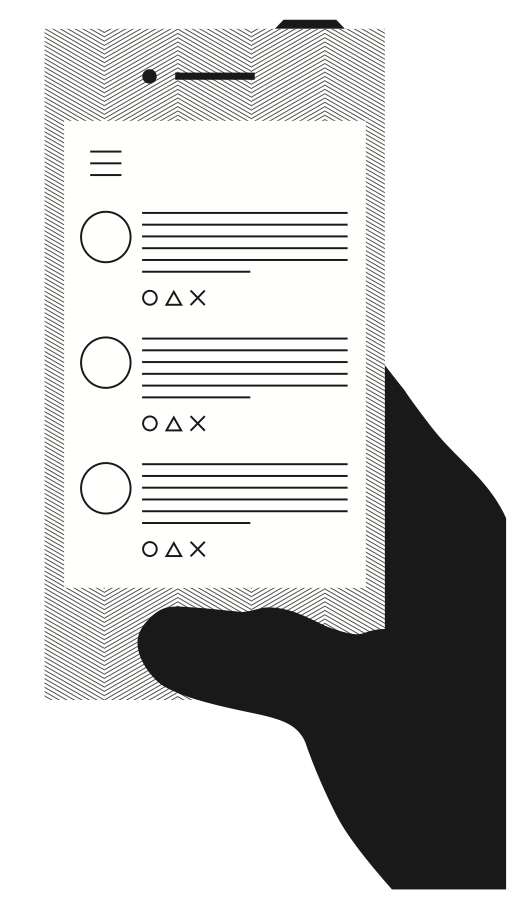
6. I leave the last open group.
I want to open the door. I look at the phone, I see a group of applications to which the last one belongs, I press the Home button to exit the group view.
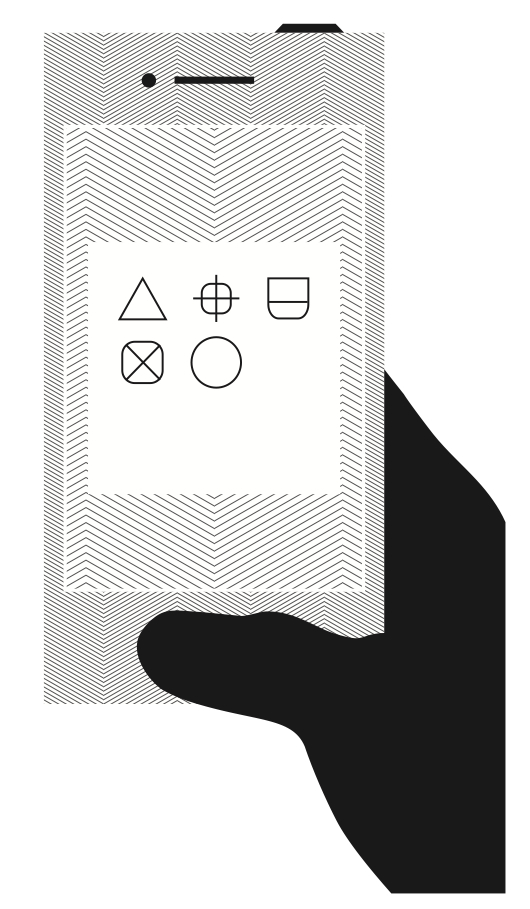
7. I scroll through the sea of icons to find the right application.
I want to open the door. I look at the phone, I see the main screen. I leaf through it from left to right, wade through the sea of icons, simultaneously fix my eyes with logos and tiny signatures with the types of applications, trying to find the application that I need right now.
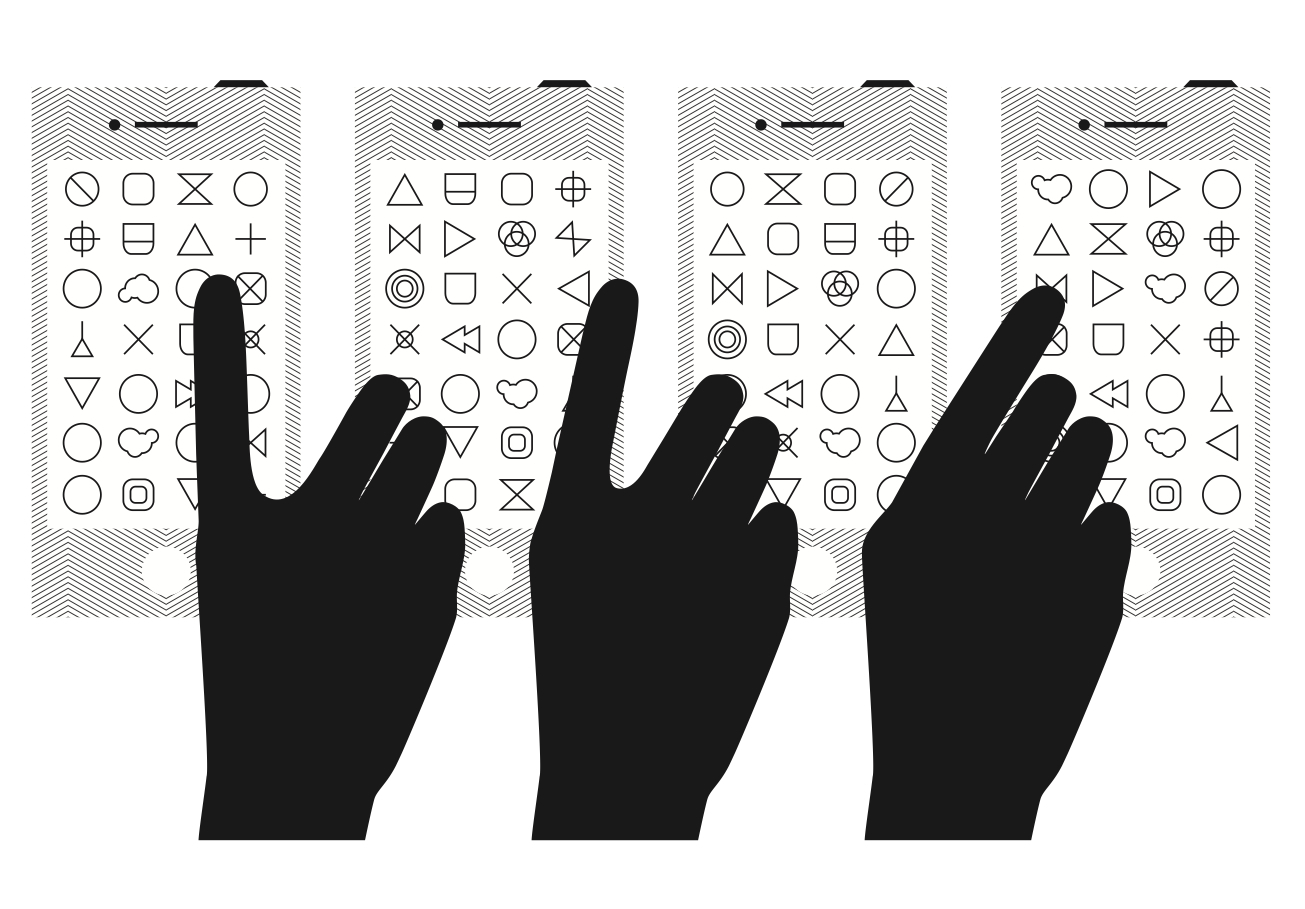
8. I click the application icon.
I want to open the door. I look at the phone, click the icon of the application that opens the door of the car.

8a. ...
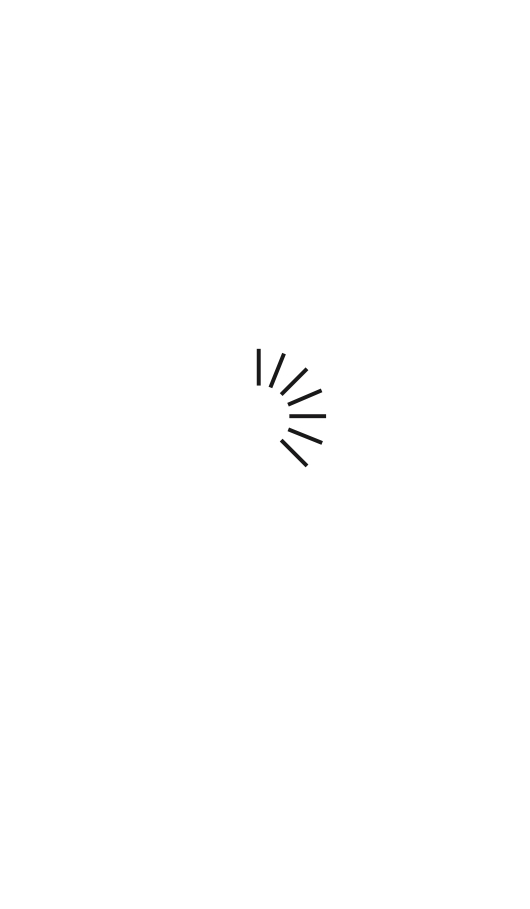
9. I wait for the application to load, and try to find the action "unlock".
I want to open the door. I look at the phone, I see a beautiful map of North America.

10. I poke back and forth in the menu and press Control.
I want to open the door. I look at the phone. Eyes scatter. I cross my fingers and press the Control option at the very bottom.
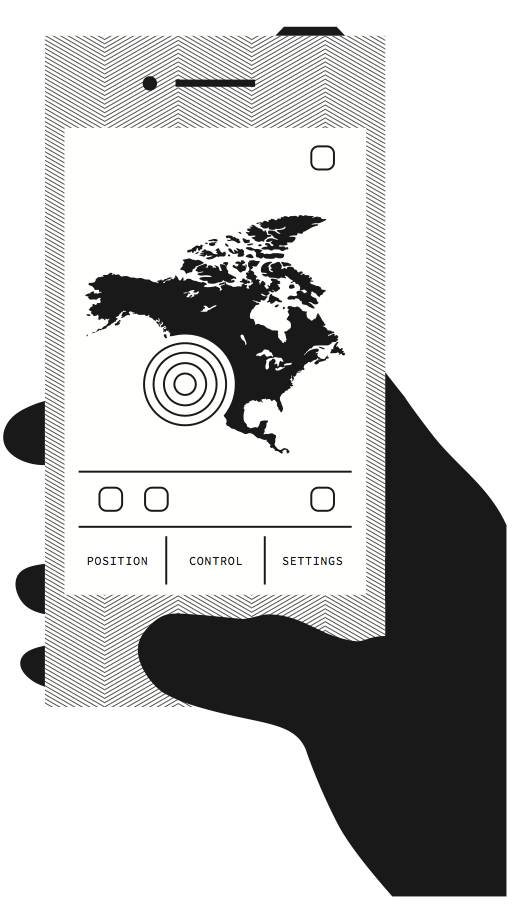
11. I press the Unlock button.
I want to open the door. I look at the phone, my eyes run even harder. At the very top of the list I find a button that says Locking / Unlocking. I shake.

12. Move the slider to the unlock state.
I want to open the door. I look at the phone, and there is a bilateral slider, on the left he has the “close” icon, on the right - “open”. I translate the slider to the right, because (if you have not forgotten), I want to open the car door.
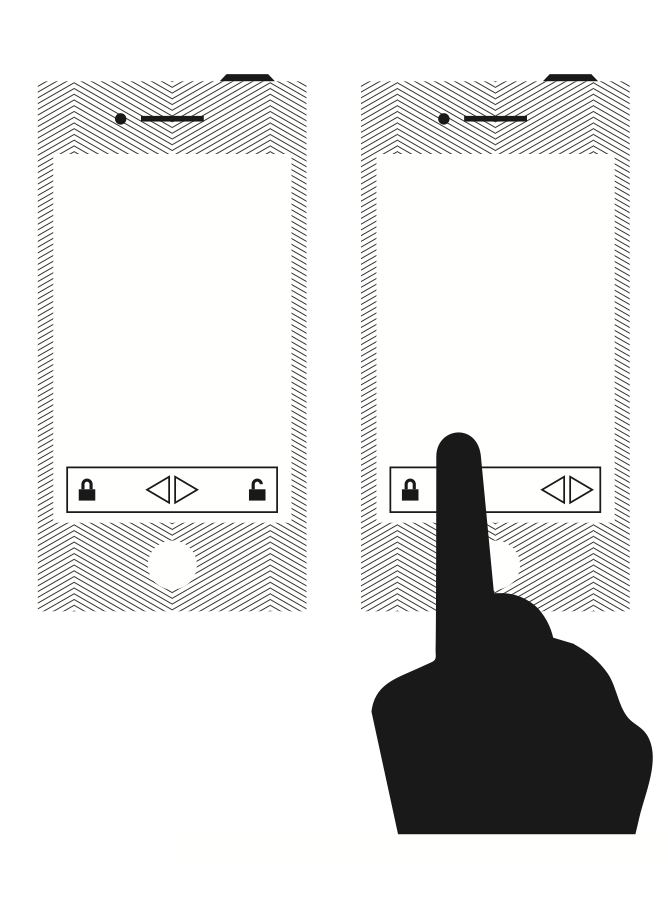
13. I pull the handle and open the car door.
I want to open the door. I look at the phone, and it says: “The data was transferred successfully.” I don’t quite understand what that means, but it seems I did it. Lord, yes! The breathtaking ... The door opened properly!
What, 13 stages?
What was it?
I just went into the parking lot, went to the car and wanted to open the door.
( It's easy ).
All operations except the first and last were performed on the digital interface.
I had a goal, and to achieve it, I had to deal with the screen. Thanks to the application, I was able to open the car door not in two, but only in thirteen stages.
Maybe our love is blind? Is this application really better than a regular key? Think, friends, and recognize: no, not better.
I know. It is not easy to part with loved ones
It would be better if we applied the first principle from this book, having completely abandoned the digital interface and preferred traditional processes. In the end, Edward Tufti himself once said: "Overload, overcrowding and confusion are not properties of information, but errors of a designer."
Getting rid of the graphical user interface, we have only two steps:
Everything else needs to be cut off.
Madness? Well, more than ten years before the release of this 13-stage application and before we were seduced by this on-screen mode, the described task was already solved by Siemens and put into service at Mercedes-Benz. Here's how: when you take the handle of the door (this is necessary to get into the car), the car gives out a low-frequency radio signal that checks whether the keys are actually nearby - say, in your pocket or purse. If so, the door will open immediately.
Is this a key optimization? Yes.
I objected: "My friend, you're wrong. And if I shut the door and forget the keys in the car? This is where the mobile app comes in handy! ”
No, your emotions are deceiving you. The machine can determine where the keys are, so if they are left in the cabin, the door simply will not close. And if in the trunk? Similarly. In other words, you just can not slam the keys in the car.
After reformulating the design context and replacing the screen interactions with the usual sequence of operations, Siemens engineers found an incredibly logical and yet beautiful solution for getting into the Mercedes salon. If you do not have a Mercedes, but the course of action is familiar to you, this means that this decision was borrowed by other automotive companies.
Has Siemens been able to improve the car key?
Yes, cap. If the usual process is adopted, then you will act naturally. If you do without a digital interface, then you will not have to master this interface, configure it, in general, you can forget about it. This is cool design thinking, especially if the task is the most prosaic
Actually, this is the book:
A good interface is the missing interface.
This book helps to re-look at our world, stuffed with digital interfaces. Understand how we have come to this, why this vicious tendency is so disgusting, how a person manages to break away from the display and put an end to these annoying applications.
This book is not revealing. It is full of ideas for entrepreneurs, startups, designers, engineers, gadget lovers and in general anyone interested in technology. She suggests how to see a completely new technological future and get carried away with something more attractive than a weather application.
The topics covered in the book are important both for you and for the whole society. Yes, my message may seem hasty, but in front of you is not a textbook. This is a friendly conversation about how to easily create superior technology.
We did not have time to put in the layout an excellent book with the intriguing title " Design. A book for non-designers " (wait in October), as we were fascinated by an even more original design work, the author of which allowed himself to doubt the expediency of further multiplying graphic interfaces
The author and designer, Golden Krishna, believes that our contemporaries are literally riveted to the displays of gadgets, and that companies developing and promoting applications do us a disservice. " Our passion for digital interfaces went out of control, " he said at the SXSW conference two years ago; since then he has been working on and developing this idea. “Many people would like to spend much less time staring at the screen,” says Krishna, “so why are display solutions so welcome in the technology world?”
')
The new book of Krishna, The Best Interface is No Interface , describes how we have come to such dependence, how to get rid of it and ensure that we are really solving the problem in the best possible way. The decision may well boil down to creating another mobile application - Krishna does not deny this and does not call for a return to the era of clamshell phones - but it may be different. The author only believes that the mass of designers and companies by default, to the use of displays and mobile applications, sometimes only complicating the way to the intended goal.
This publication contains the contents of one of the chapters of the book of Krishna. The material in this chapter is particularly relevant, considering how much attention is now focused on Apple and its new high-tech smart watch. “In many articles on the use of Apple Watch, the authors praise the standard on-screen interactions,” says Krishna. - “Here are all the screens that will have to open to call a taxi. Here's what Facebook notifications look like. Here is your Instagram feed. It's all boring, not to mention the fact that the watch functionally duplicate the smartphone. ”
Despite the feeling that we, as it were, “overshifted”, Krishna hopes that the situation will begin to improve, and believes that young designers can contribute to this. “Young people are not cool to put fingers on the screen, as their ancestors did,” he believes. - “All these screens are too similar to one another.” By the way, teenagers gradually begin to refuse Facebook . There, the presence of parents is increasingly felt, while other services and applications are not just more flexible, but also cope better with their immediate task: the exchange of messages and pictures.
The following chapter from the book The Best Interface is No Interface is called “Screen Thinking: Let's Write the Application!” In it, Krishna presents, perhaps, the most vicious scenario of “screen thinking” that has taken root in many companies.
On-screen thinking: Let's write the app!
Somewhere and sometime we fell in love with each other.
True, I do not remember when. Like all relationships, this affection arose as if in a single moment - to replace our inexpressive affairs that we had to deal with earlier, there was a passionate and unconditional love for modern, charming, wonderful new day interfaces: mobile applications.
Maybe it all started with a sweet, insinuating whispering, which we regaled in 2009:
“This is what the iPhone conquers: if you want to find out if there will be snowfall in the mountains today - and for this there is an application.”
Who cares about the statistics of the "National Association of Retail Sports in the Field of Winter Sports Equipment", according to which only 2.6 percent of Americans go skiing, and they do it no more than eight days a year. The main thing - there is an application. Having given in to this singing of sirens, we already understand nothing. Love and reason? They do not mix like oil with vinegar.
The sales agent kept saying everything. Heart beat faster. “And if you want to clarify where exactly you parked yesterday ...”
Do not tease me. We all know what will happen after this phrase. Three beautiful patented words that seemed not to have deliberately sharpened our generation into a real cell, limiting any technological creativity.
There is a suitable application TM
ABSENT-FREE, SURFACE APPS
What is the difference that about 780 million people in the world suffer from a shortage of clean drinking water, which in the rich USA has more than half a million homeless people. We went out of the plane of these “prosaic” social problems and all together moved into the sphere of technology - which in the usual manner breaks the old, inculcates the new, continuing the chronicle of progress - to provide the world with the most necessary: new mobile applications.
But this is not about ideal, meaningful, inconspicuous applications that silently and effectively work on your smartphone, watch or tablet. We offer to your attention vacuous and superficial applications that tempt you with life-affirming, to the heart attractive interactive interfaces that react to brushing and pinching with two fingers. This is what people really want, what they desire and desire.
Love is patient. Love is sweet. Love is downloaded for only 99 cents.
Take any news resource. It is likely that there will be a fresh article, a column, and perhaps a whole rubric, the authors of which saliva emanate from new applications. Maybe the journalists just want to brag about what they are about - yes, we understand the applications - but maybe they just like to refuel with oxytocin, which stands out from the fun of the touch screen.
The application as such does not necessarily prove useful and necessary to anyone, but - tsss! - we must stand up for the honor of our favorite program. Application development is presented as a fascinating fairy tale: we just have to pray for the person who wrote the workable code, which somehow gave us a dark and mysterious path to the catalog of Apple or Google applications.
A pair of words about oxytocin
The New York Times has a column called “App of the Week,” as well as a standing column, “App Smart Extra,” with inspiring headlines like “A weather app that works.” Does it really work ?! Well, just a balm for the soul.
And when there was a financial crisis, the New York Times presented a program from Bloomberg in the “App of the Week” section, which reports “basic data from stock markets”. What? Masterpiece!
So imagine how you pour yourself a glass of Chablis, put the album of Norah Jones for the mood and re-read the insightful opus of “USA Today” entitled “5 new applications that will change your life.” I am already on the first line: “Applications, again apps ... truly changed our lives. "
You might be thinking, “Oh, just turn on some talking head on TV and forget about my smartphone museum.” Think about it, my friend. Below are the non-fiction headlines from CNN.
- Stuck in the snow? There is a suitable application
- Are you sad? There is a suitable application.
- Will you be in the danger zone? There is a suitable application
- Want sex by correspondence? There is a suitable application
- Toilet paper over? There is a suitable application
- Want to pray? There is a suitable application
According to Google Trends, the most popular search query is the word “app.”

Not surprisingly, almost any large automotive company develops applications for smartphones. Who can resist this passion? If the engineering industry for 120 years engaged in the creation of all-new four-wheel models, then it would not hurt to update a little. Some applications, praised in press releases and blogs, allow you to open the doors in the car.
“My BMW app opens doors, launches power, and more ...”
The question arises: how to make a better car key? Most of these applications for automatic door opening are functionally similar, so for the sake of demonstration, let’s look at how exciting it would be to use the BMW application for iPhone when the latest version of the Apple operating system is installed on the smartphone. In Apple language, this means “the most advanced OS in the world. Her highest incarnation. "
1. Go to the car.
I go to the car, I want to open the door.

2. Take out the phone.
Going to open the door. Therefore, I put my hand in my pocket and carefully remove the smartphone from there, because, of course, I don’t want to drop the valuable thing made of glass and thin metal onto the concrete floor of the parking lot.

3. I activate the phone.
I want to open the door. Therefore, I look at the phone and almost automatically remove the gadget from sleep mode by pressing the main button.

4. Unlock the smartphone.
I want to open the door. I look at the phone, press the round Home button under the screen so that the fingerprint scanner unlocks my device.

5. Exit the last open application.
I want to open the door. I look at the phone, I see the last open application and press the Home button to exit the application (I hope the Twitter feed will not distract me. By the way, have you already seen the photos of the august baby? It is growing so fast! So, what did I want there ...)

6. I leave the last open group.
I want to open the door. I look at the phone, I see a group of applications to which the last one belongs, I press the Home button to exit the group view.

7. I scroll through the sea of icons to find the right application.
I want to open the door. I look at the phone, I see the main screen. I leaf through it from left to right, wade through the sea of icons, simultaneously fix my eyes with logos and tiny signatures with the types of applications, trying to find the application that I need right now.

8. I click the application icon.
I want to open the door. I look at the phone, click the icon of the application that opens the door of the car.

8a. ...

9. I wait for the application to load, and try to find the action "unlock".
I want to open the door. I look at the phone, I see a beautiful map of North America.

10. I poke back and forth in the menu and press Control.
I want to open the door. I look at the phone. Eyes scatter. I cross my fingers and press the Control option at the very bottom.

11. I press the Unlock button.
I want to open the door. I look at the phone, my eyes run even harder. At the very top of the list I find a button that says Locking / Unlocking. I shake.

12. Move the slider to the unlock state.
I want to open the door. I look at the phone, and there is a bilateral slider, on the left he has the “close” icon, on the right - “open”. I translate the slider to the right, because (if you have not forgotten), I want to open the car door.

13. I pull the handle and open the car door.
I want to open the door. I look at the phone, and it says: “The data was transferred successfully.” I don’t quite understand what that means, but it seems I did it. Lord, yes! The breathtaking ... The door opened properly!
What, 13 stages?
What was it?
I just went into the parking lot, went to the car and wanted to open the door.
( It's easy ).
- I went to the car
- Take out the phone
- I activate the phone
- Unlock the phone
- I quit the last open application
- I quit the last open group
- I scroll the sea of icons to find the right application
- I click the application icon
- Waiting for the application to load, and trying to find the action "unlock"
- I poke back and forth in the menu and press Control
- I press the Unlock button
- I move the slider to unlock
- I pull the handle and open the door of the car (my goal)
All operations except the first and last were performed on the digital interface.
I had a goal, and to achieve it, I had to deal with the screen. Thanks to the application, I was able to open the car door not in two, but only in thirteen stages.
Maybe our love is blind? Is this application really better than a regular key? Think, friends, and recognize: no, not better.
I know. It is not easy to part with loved ones
It would be better if we applied the first principle from this book, having completely abandoned the digital interface and preferred traditional processes. In the end, Edward Tufti himself once said: "Overload, overcrowding and confusion are not properties of information, but errors of a designer."
Getting rid of the graphical user interface, we have only two steps:
- The driver is coming to the car
- Key opens the door
Everything else needs to be cut off.
Madness? Well, more than ten years before the release of this 13-stage application and before we were seduced by this on-screen mode, the described task was already solved by Siemens and put into service at Mercedes-Benz. Here's how: when you take the handle of the door (this is necessary to get into the car), the car gives out a low-frequency radio signal that checks whether the keys are actually nearby - say, in your pocket or purse. If so, the door will open immediately.
Is this a key optimization? Yes.
I objected: "My friend, you're wrong. And if I shut the door and forget the keys in the car? This is where the mobile app comes in handy! ”
No, your emotions are deceiving you. The machine can determine where the keys are, so if they are left in the cabin, the door simply will not close. And if in the trunk? Similarly. In other words, you just can not slam the keys in the car.
After reformulating the design context and replacing the screen interactions with the usual sequence of operations, Siemens engineers found an incredibly logical and yet beautiful solution for getting into the Mercedes salon. If you do not have a Mercedes, but the course of action is familiar to you, this means that this decision was borrowed by other automotive companies.
Has Siemens been able to improve the car key?
Yes, cap. If the usual process is adopted, then you will act naturally. If you do without a digital interface, then you will not have to master this interface, configure it, in general, you can forget about it. This is cool design thinking, especially if the task is the most prosaic
Actually, this is the book:
A good interface is the missing interface.
This book helps to re-look at our world, stuffed with digital interfaces. Understand how we have come to this, why this vicious tendency is so disgusting, how a person manages to break away from the display and put an end to these annoying applications.
This book is not revealing. It is full of ideas for entrepreneurs, startups, designers, engineers, gadget lovers and in general anyone interested in technology. She suggests how to see a completely new technological future and get carried away with something more attractive than a weather application.
The topics covered in the book are important both for you and for the whole society. Yes, my message may seem hasty, but in front of you is not a textbook. This is a friendly conversation about how to easily create superior technology.
Source: https://habr.com/ru/post/264759/
All Articles